About thirty "crus", with the largest palette of mineral aromas
La Chablisienne is present in the whole vineyard.
In the whole appellation area, we produce every year thirty different "crus" with a strong personality: six Grands Crus, fifteen Premiers Crus, many Chablis and Petit Chablis. Among our Grands Crus there is Château Grenouilles, unique “Château” of the Chablis vineyard. The vinification of the grape juice produced by our wine growers takes place in the cellar, according to the different terroirs. La Chablisienne wines have a strong identity and provide pure emotion, the mineral touch.
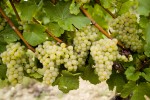
A single variety, the Chardonnay
![]()
Our vineyard practices and winemaking methods

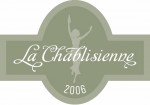
A single variety, le Chardonnay
«About thirty "Crus", with a largest palette of mineral aromas | Our vineyard practices and winemaking methods»
The great renown of Chablis can be ascribed to its unique grape variety: Chardonnay.
 It is here in Burgundy, its original homeland, that the grape’s character emerged to become a synonym over the centuries for wine in all its great splendour. On the slopes of Chablis along the Serein valley, the Chardonnay has found over the generations an ideal fit with its native terroir. It is a perfect match deriving largely from the inspired insight of Cistercian monks from Cîteaux, who founded Pontigny Abbey in the 12th century, and which continues to underlie the association of Chardonnay with the terroirs of Chablis.
It is here in Burgundy, its original homeland, that the grape’s character emerged to become a synonym over the centuries for wine in all its great splendour. On the slopes of Chablis along the Serein valley, the Chardonnay has found over the generations an ideal fit with its native terroir. It is a perfect match deriving largely from the inspired insight of Cistercian monks from Cîteaux, who founded Pontigny Abbey in the 12th century, and which continues to underlie the association of Chardonnay with the terroirs of Chablis.
The work these monks accomplished is crucial to an understanding of today’s wines. The long process, year after year, of identifying the finest terroirs, selecting the best plants to set apart for propagation, perfecting suitable viticulture, experimenting with winemaking methods vintage after vintage – such is the inestimable contribution made by the monastic wine culture of Burgundy. The same outlook and commitment lives on today at La Chablisienne.
Our vineyard practices and winemaking methods
«A single variety, the Chardonnay | Appellations»
La Chablisienne’s commitment is to ensuring that its members run their vineyards in accordance with the principles of sustainable viticulture.
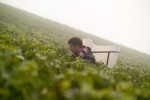 Our priorities are working the soil, the quality of the vines and intervention on the plant throughout the growing season. Recourse to treatment products must be balanced – the French say ‘reasoned”- to ensure respect for the environment, for the vine itself and for people. All this combined activity converges in the choice of the optimal harvesting date which is determined individually, plot by plot, according to analysis of the crop and the taste of the grapes.
Our priorities are working the soil, the quality of the vines and intervention on the plant throughout the growing season. Recourse to treatment products must be balanced – the French say ‘reasoned”- to ensure respect for the environment, for the vine itself and for people. All this combined activity converges in the choice of the optimal harvesting date which is determined individually, plot by plot, according to analysis of the crop and the taste of the grapes.
Vinification methods are inspired by the same commitment to getting the utmost from the juice, obtaining the greatest expression from the wealth of potential in Chablis’s supreme terroirs.
Our desire is materialised by what are in fact relatively simple winemaking practices:
· musts tasted and analysed systematically prior to rigorous selection,
· avoidance of any hard and fast approach, so that technical decisions can be reasoned and adapted to each wine,
· tasting as the primary tool,
· choices in vinification made in the light of each terroir,
· winemaking and maturing carried out in stainless steel tanks and in barrels (great care taken in choosing both the oak and the barrels),
· extended barrel-ageing on the lees, depending on each classed Cru,
· totality of each wine bottled at the same time.
Appellations
«Our vineyards practices and winemaking methods | Our terroir»
Petit Chablis
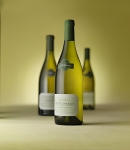 The “Petit Chablis” appellation forms the base of the Chablis appellation hierarchy. Situated on the plateaux in clay and limestone soil deriving from Portlandian geological times, the Petit Chablis constitute a panoply of wines whose expressions range from the fresh and lively with fruity aromas best enjoyed young, to dry, mineral wines enhanced by two or three years ageing. Whatever their profile, “Petit Chablis” provide the winelover with a key to the world of Chablis, opening the way to the treasure house of the “Grands”.
The “Petit Chablis” appellation forms the base of the Chablis appellation hierarchy. Situated on the plateaux in clay and limestone soil deriving from Portlandian geological times, the Petit Chablis constitute a panoply of wines whose expressions range from the fresh and lively with fruity aromas best enjoyed young, to dry, mineral wines enhanced by two or three years ageing. Whatever their profile, “Petit Chablis” provide the winelover with a key to the world of Chablis, opening the way to the treasure house of the “Grands”.
Chablis
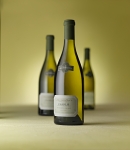 The “Chablis” appellation is the most extensive of the whole Chablis area. Growing in the renowned Kimmeridgian soil on slopes along both sides of the River Serein, the “Chablis” vineyards give wines that are the indisputable representatives of the real Chablis style. The terroir here brings freshness, a mineral edge, finesse and complexity. Depending on the vinification, the wine can be drunk young, one to three years old, when it has a refreshing quality; or between three and eight years for wines coming from old vines, when they will possess much more complexity, with a mineral touch and richness of aromas.
The “Chablis” appellation is the most extensive of the whole Chablis area. Growing in the renowned Kimmeridgian soil on slopes along both sides of the River Serein, the “Chablis” vineyards give wines that are the indisputable representatives of the real Chablis style. The terroir here brings freshness, a mineral edge, finesse and complexity. Depending on the vinification, the wine can be drunk young, one to three years old, when it has a refreshing quality; or between three and eight years for wines coming from old vines, when they will possess much more complexity, with a mineral touch and richness of aromas.
The Premiers Crus
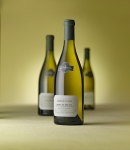 An encounter with the thirteen different terroirs of the “Chablis Premier Crus”, situated on both banks of the Serein, provides an understanding of the great Kimmeridgian terroirs in Chablis. The vineyards of the Premiers Crus flourish on superbly exposed south-east and south-west facing slopes, bringing to each wine its own unique personality. Thus, certain Premiers Crus such as the Montée de Tonnerre or Côte de Léchet are fine and mineral whereas others, for example the Beauroy, are softer and more fruity, or floral and full-fleshed like the Fourchaume. Chablis Premier Crus reach their full splendour in six to eight years.
An encounter with the thirteen different terroirs of the “Chablis Premier Crus”, situated on both banks of the Serein, provides an understanding of the great Kimmeridgian terroirs in Chablis. The vineyards of the Premiers Crus flourish on superbly exposed south-east and south-west facing slopes, bringing to each wine its own unique personality. Thus, certain Premiers Crus such as the Montée de Tonnerre or Côte de Léchet are fine and mineral whereas others, for example the Beauroy, are softer and more fruity, or floral and full-fleshed like the Fourchaume. Chablis Premier Crus reach their full splendour in six to eight years.
The Grands Crus
 Renowned worldwide, the “Chablis Grands Crus” are known by winelovers everywhere as the kings of the appellation. Coming exclusively from the right bank of the Serein at Chablis itself, the vineyards make up a complete ensemble of 100 hectares (240 acres) most of which have a south-west aspect. Chablis Grands Crus are well formed and complete with an affirmed character that is enhanced with time. Before really opening out they need five to eight years of ageing and can keep remarkably well. La Chablisienne harvests and vinifies six of the seven Grands Crus, each of which has its own different personality: Bougros: lively and mineral, Les Preuses: with breed and length, Vaudésir: fleshy and big, Les Clos: dry and mineral, Blanchot: supple and aromatic, Grenouilles: elegant and fruity.
Renowned worldwide, the “Chablis Grands Crus” are known by winelovers everywhere as the kings of the appellation. Coming exclusively from the right bank of the Serein at Chablis itself, the vineyards make up a complete ensemble of 100 hectares (240 acres) most of which have a south-west aspect. Chablis Grands Crus are well formed and complete with an affirmed character that is enhanced with time. Before really opening out they need five to eight years of ageing and can keep remarkably well. La Chablisienne harvests and vinifies six of the seven Grands Crus, each of which has its own different personality: Bougros: lively and mineral, Les Preuses: with breed and length, Vaudésir: fleshy and big, Les Clos: dry and mineral, Blanchot: supple and aromatic, Grenouilles: elegant and fruity.
Château Grenouilles, a wine of legend
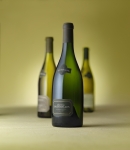 The Château Grenouilles estate is an exceptional property unique in Chablis. Situated in the heart of the Grands Crus vineyards at the foot of the Grenouilles hillside, its 7.2 hectares (some 18 acres) form one superbly exposed single plot facing south-west towards the village and produce the rarest of Chablis Grands Crus: Les Grenouilles. This Château Grenouilles is made from selected sections carrying the oldest vines in the vineyard and the wine allies a nose with great definition to an aromatic purity in the mouth, a harmony of power and finesse and a very long finish. Blessed with enormous potential for keeping, it is a statement of what a great Chablis vin de terroir is. The Château’s second wine, “Le Fief de Grenouilles”, illustrates to perfection the style of Grenouilles’s terroir. The harvest from vines more than thirty five years old gives a wine that is a perfect expression of generosity, harmony between structure and elegance and the mineral edge of a Chablis Grand Cru.
The Château Grenouilles estate is an exceptional property unique in Chablis. Situated in the heart of the Grands Crus vineyards at the foot of the Grenouilles hillside, its 7.2 hectares (some 18 acres) form one superbly exposed single plot facing south-west towards the village and produce the rarest of Chablis Grands Crus: Les Grenouilles. This Château Grenouilles is made from selected sections carrying the oldest vines in the vineyard and the wine allies a nose with great definition to an aromatic purity in the mouth, a harmony of power and finesse and a very long finish. Blessed with enormous potential for keeping, it is a statement of what a great Chablis vin de terroir is. The Château’s second wine, “Le Fief de Grenouilles”, illustrates to perfection the style of Grenouilles’s terroir. The harvest from vines more than thirty five years old gives a wine that is a perfect expression of generosity, harmony between structure and elegance and the mineral edge of a Chablis Grand Cru.
Our terroir
«Appellations | Our tasting notes»
The terroirs that produce the wines of La Chablisienne represent the whole Chablis appellation area.
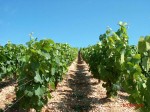 The soils, formed in the main in Kimmeridgian times, are made up of alternating marl and marly limestone with deposits of tiny oysters. They stamp the wines of La Chablisienne with outstanding personality, hallmarked by an unusual mineral edge. Each terroir , clearly identified and circumscribed, produces unique wines, with different characters and potential for ageing. The Petit Chablis show perfectly from one to three years, the Chablis require from two to five years depending on the particular wine. Chablis Premiers Crus and Chablis Grands Crus, true wines for ageing, need to be kept for five to ten years.
The soils, formed in the main in Kimmeridgian times, are made up of alternating marl and marly limestone with deposits of tiny oysters. They stamp the wines of La Chablisienne with outstanding personality, hallmarked by an unusual mineral edge. Each terroir , clearly identified and circumscribed, produces unique wines, with different characters and potential for ageing. The Petit Chablis show perfectly from one to three years, the Chablis require from two to five years depending on the particular wine. Chablis Premiers Crus and Chablis Grands Crus, true wines for ageing, need to be kept for five to ten years.
Of vital importance to the expression of a vineyard plot’s singular character is its exposure, most of the climats belonging to La Chablisienne benefiting from a south-easterly, southern or south-westerly aspect.







